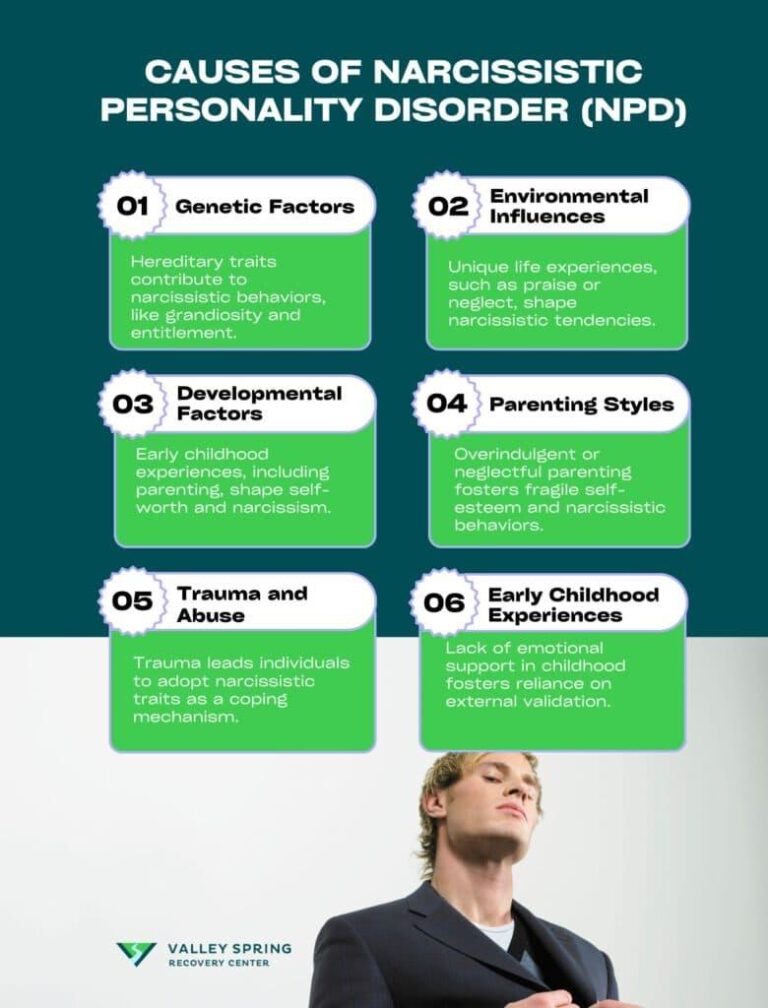Narcissistic Personality Disorder (NPD) is often misunderstood, with its manifestations extending far beyond the stereotypical traits of vanity or arrogance. In social and work environments, NPD can subtly—and sometimes overtly—shape interactions, influence team dynamics, and impact overall well-being. Understanding how NPD presents itself in these settings is crucial not only for recognizing the behaviors but also for navigating relationships more effectively. In this article, we’ll explore the distinctive ways NPD shows up in social circles and professional spaces, shedding light on patterns that can disrupt harmony and offering insights on how to manage these challenging dynamics.
Table of Contents
- Understanding Narcissistic Behaviors in Social Settings and Their Impact on Relationships
- Identifying NPD Patterns in the Workplace and Challenges for Team Dynamics
- Practical Strategies for Managing Interactions with Individuals Exhibiting Narcissistic Traits
- Building Healthy Boundaries and Promoting Empathy in Professional and Personal Environments
- Wrapping Up
Understanding Narcissistic Behaviors in Social Settings and Their Impact on Relationships
Individuals exhibiting narcissistic personality disorder (NPD) often bring a distinct energy to social and professional environments that can disrupt the natural flow of relationships and team dynamics. Their constant need for admiration and validation can manifest as monopolizing conversations, overshadowing others’ contributions, or dismissing feedback. This behavior not only creates tension but can also breed resentment among peers. In social settings, their charm may initially attract attention, yet the underlying self-centeredness tends to alienate friends over time, leading to shallow or one-sided connections.
At work, narcissistic behaviors can affect collaboration and productivity. Those with NPD may:
- Claim credit disproportionately for team successes
- Undermine colleagues to elevate their own status
- Resist accountability and blame others for failures
Such dynamics often result in a toxic atmosphere, decreased morale, and high turnover rates. Understanding these patterns is crucial for fostering healthier interactions and managing relationships effectively, whether you’re a leader navigating a narcissistic team member or a peer seeking to maintain boundaries without confrontation.
Identifying NPD Patterns in the Workplace and Challenges for Team Dynamics
In professional settings, individuals exhibiting traits associated with Narcissistic Personality Disorder (NPD) often create subtle yet impactful disruptions. Such behaviors can manifest as an insatiable need for admiration, a tendency to overstate personal achievements, and an exaggerated sense of entitlement. These patterns not only hinder collaborative efforts but also erode trust within teams. Colleagues may find themselves walking on eggshells to avoid triggering defensiveness or harsh criticism from the person exhibiting these traits, which ultimately diminishes open communication and stifles innovation. Recognizing these behaviors early is crucial, as they often mask underlying insecurities that drive a relentless pursuit of control and recognition.
Teams grappling with these dynamics frequently encounter a range of challenges that threaten overall productivity and morale. Common issues include:
- Disproportionate Credit-Seeking: An individual may monopolize successes, claiming credit at the expense of team efforts.
- Resistance to Feedback: Constructive criticism is often met with hostility or deflection, preventing personal and professional growth.
- Manipulative Interaction Styles: Subtle tactics, such as gaslighting or playing team members against one another, can fracture cohesion.
- Fragile Team Climate: The pervasive atmosphere of competition and insecurity undermines psychological safety.
Effectively managing these patterns requires both awareness and strategic leadership approaches that emphasize empathy, clear boundaries, and consistent accountability.
Practical Strategies for Managing Interactions with Individuals Exhibiting Narcissistic Traits
When dealing with individuals exhibiting narcissistic traits, it’s essential to establish clear boundaries early on. These personalities often seek admiration and can become manipulative or dismissive when their needs aren’t met, which can lead to workplace conflicts or social discomfort. One effective approach is to maintain a firm, yet respectful tone, ensuring your limits are communicated without feeding into their need for control. Always focus on facts, and avoid emotional appeals, as these can be exploited. Having a structured communication strategy helps reduce misunderstandings and protects your mental well-being.
Consider incorporating these tactics:
- Selective transparency: Share only the necessary information that supports collaboration without enabling manipulation.
- Consistent boundaries: Reinforce expectations regularly to prevent overstepping or entitlement behaviors.
- Avoid power struggles: Recognize when to disengage from arguments that serve no productive outcome.
- Leverage third-party frameworks: Use HR policies or group norms to mediate and validate your position.
Building Healthy Boundaries and Promoting Empathy in Professional and Personal Environments
Establishing clear and healthy boundaries is fundamental when navigating interactions with individuals exhibiting traits of Narcissistic Personality Disorder (NPD). Without these boundaries, it becomes easy to fall prey to manipulation, emotional exhaustion, or blurred roles, especially in environments where power dynamics are already delicate. Prioritizing self-awareness and recognizing one’s limits can shield against undue influence and foster mutual respect. In practical terms, this involves:
- Communicating assertively to express needs and limits without guilt.
- Identifying early signs of boundary violations such as excessive demands or emotional coercion.
- Enforcing consequences consistently when boundaries are crossed, ensuring personal well-being.
Simultaneously, promoting empathy within both professional and personal spheres counterbalances the challenges posed by narcissistic behaviors. Empathy helps create a culture of understanding, diminishing opportunities for conflict escalation and encouraging collaborative solutions. Leaders and peers can nurture this culture by modeling active listening, validating diverse perspectives, and recognizing the motivations behind certain behaviors rather than reacting to them with defensiveness. This approach not only supports healthier interpersonal dynamics but also transforms potentially toxic environments into spaces conducive to growth and psychological safety.
Wrapping Up
Understanding how Narcissistic Personality Disorder (NPD) manifests in social and work environments is crucial for fostering healthier relationships and more productive workplaces. While interacting with individuals who exhibit narcissistic traits can be challenging, awareness and informed strategies can make a significant difference. By recognizing these patterns early, setting clear boundaries, and promoting open communication, we can create environments that support both personal well-being and collective success. Remember, empathy combined with practical approaches is key to navigating the complexities of NPD in everyday interactions.

